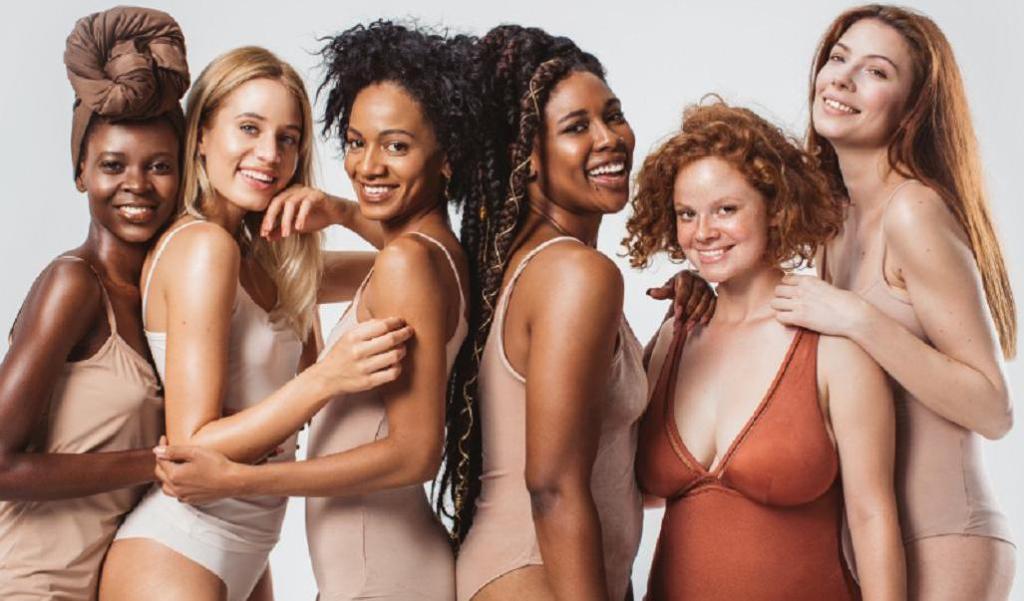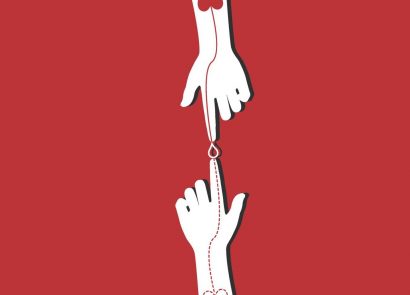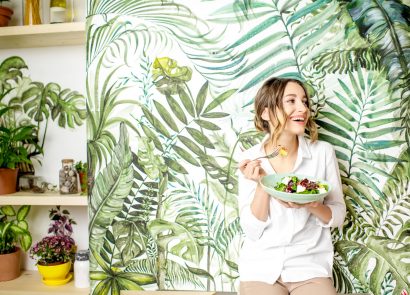The concept of fully embracing your body, flaws and all, sounds daunting, but what if it could be the best thing for you and your health? H&W investigates.
The body positivity (bopo) movement was a revelation. Women everywhere were loving their bodies, no matter what shape or size and it was a real breakthrough for the wellness industry. But now there’s a new outlook taking its place: body neutrality. It’s a refreshing way of looking at not just our bodies, but our self-worth in society. So, we’ve enlisted the help of the experts to decode the buzzword, make peace with food and find your way to body acceptance once and for all.
What is body neutrality?
To put it simply, body neutrality is feeling impartial about your body and breaking the perception that our bodies are meant to look a certain way, says transformational coach and founder of the Warrior Woman movement, Nicky Clinch (nickyclinch.com). “It’s the process of completely disarming and eradicating the perception that there is meant to be a ‘right’ or ‘wrong’-shaped body. If we allow ourselves to let go of these pre-conceived perceptions of what our bodies should look like, it opens the possibility that all body shapes are acceptable and welcomed.”
How does this differ from body positivity?
Body positivity took social media by force with a true ‘love yourself, no matter what’ message. But unfortunately this love affair didn’t last very long. Instagram influencers and the general public were quick to realise that having to really love your body can put a lot of pressure on you, which is where body neutrality comes in. “The body positive movement had more of a focus on the body and a celebration of what it looked like in all forms,” states eating disorder practitioner, Laura Phelan (phelanwell.com). “Its roots derive from the fat-acceptance movement, but it extends to anyone who has been marginalised for their body type or ability of their body, such as trans, gay or disabled.” Intuitive living coach and founder of Rooted Living, Pandora Paloma (rootedliving.co), says that we are so much more than what we look like. “The more we talk about bodies, the more they continue to be put in the spotlight, sadly opens doors to judgement. My hope is that one day we go beyond this, where commenting on how we look doesn’t take place at all.”
What else do I need to know?
Body neutrality also involves listening to your body and going back to basics when it comes to food. Research has revealed that two thirds of people in Britain are on a diet ‘most of the time’ (mintel.com), but body neutrality stays well clear of diets and instead encourages people to eat intuitively. “Intuitive eating rejects any diet mentalities you may be living with, for example restricting entire food groups because you think they’re unhealthy or having a strict set of rules around what you eat,” continues Pandora. “Intuitive eating helps you make peace with food and really start to tune into your own hunger and honour it. It takes away deprivation and negative thinking around food, as well as the endless control pattern we often find ourselves in. As soon as we start eating intuitively, we free up that energy and time spent on food, and start bringing it into other areas of our lives. We learn to listen to what our body needs and feed it correctly. We learn to feel satisfied.”
How can intuitive eating be implemented in everyday life?
Although the practice of intuitive eating takes time, commitment and patience to grasp, it can benefit our lives so drastically, informs Nicky. “We can begin with daily journaling on the pre-conceived ideas we’re currently carrying around food and eating. Do we think we need to eat a certain number of meals a day? Are there good foods and bad foods we are stuck with?” So, by recording what we’re eating, we can really gain some awareness of what the constraints are that we feel towards food. “The next step is learning to listen for our actual hunger each day. If we used a scale from one to 10, where one is not hungry at all and 10 is starving, we learn to listen to our bodies calling to us when we get to around four, and that’s when we need to eat. Then, once we listen for our hunger, we can take a moment to close our eyes, asking our body what we actually feel like eating. Something hot or cold? A savoury or sweet flavour? Whatever our body asks for, we feed it with love, trust and respect. Lastly, we then learn to listen for when ‘enough’ is calling, again using the scale from one to 10. One being not satisfied and 10 feeling stuffed, we learn to listen to the ‘I’ve had enough’ signal from our body and make a commitment to honour that, promising ourselves we can have what we want again when we are next hungry.”
Is it really here to stay?
Body positivity may have faded into the background. But, how long will body neutrality stick around for? “I think more women are rising up against diet culture and the effects it has on their mental health and self-worth,” explains Pandora. “Like with anything, body neutrality will take time and there will always be conflicting views, but at least this is a step in a positive direction, away from trends and something that can empower women.”
Pandora’s tips to loving yourself, inside and out
1. Write down your valuables list
What are your unique qualities that you bring to the world? Read these daily.
2. Speak to yourself as you would a friend
Think about what comments you are making about yourself, would you say the same to your friend?
3. Make friends with your inner critic
Don’t allow it to be a one-way conversation. Speak back and work out where these limiting beliefs are coming from.
4. Create affirmations
Think of mantras that make you feel positive about your body, such as ‘I work with my body, not against it’. 5 Do things that bring you joy Whether it’s a walk in the park or a bubble bath, do things for you.



















